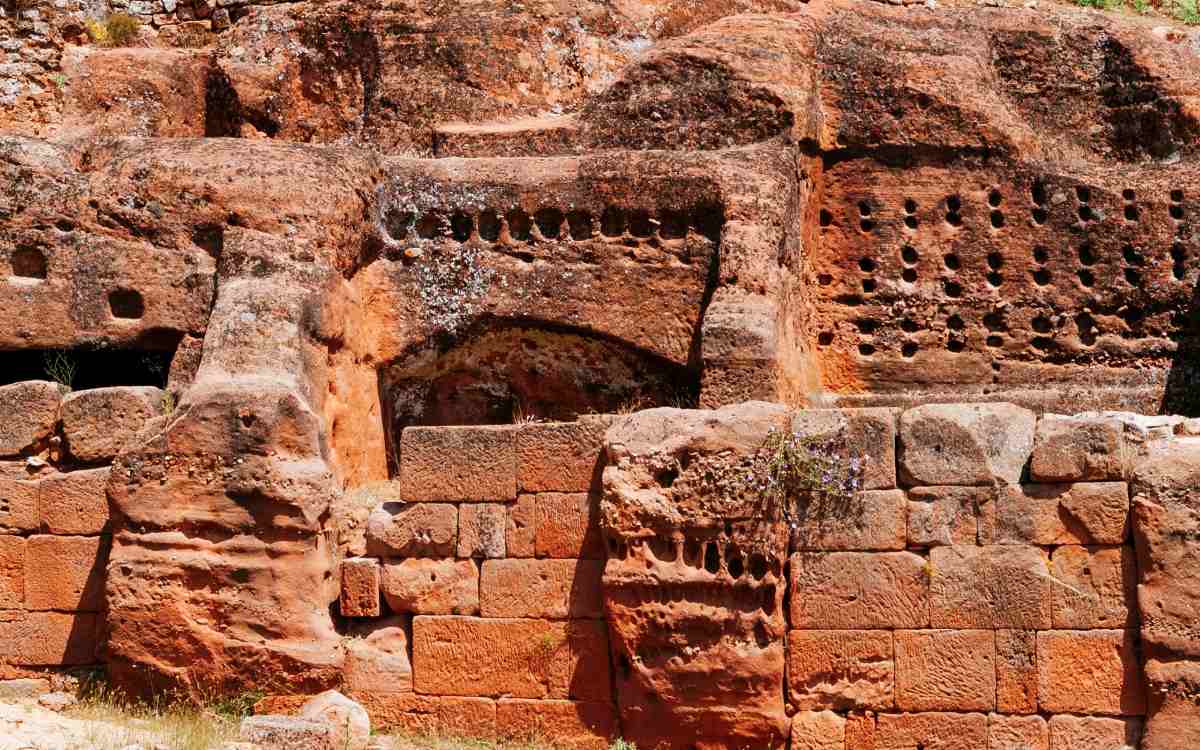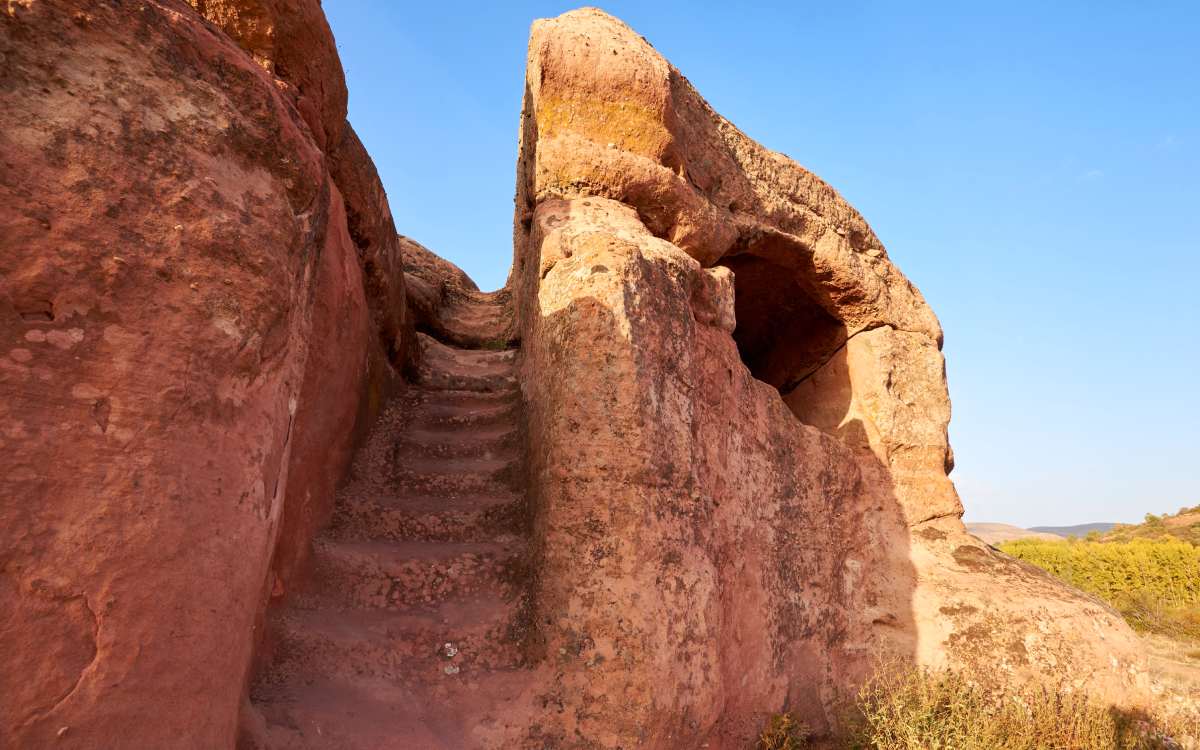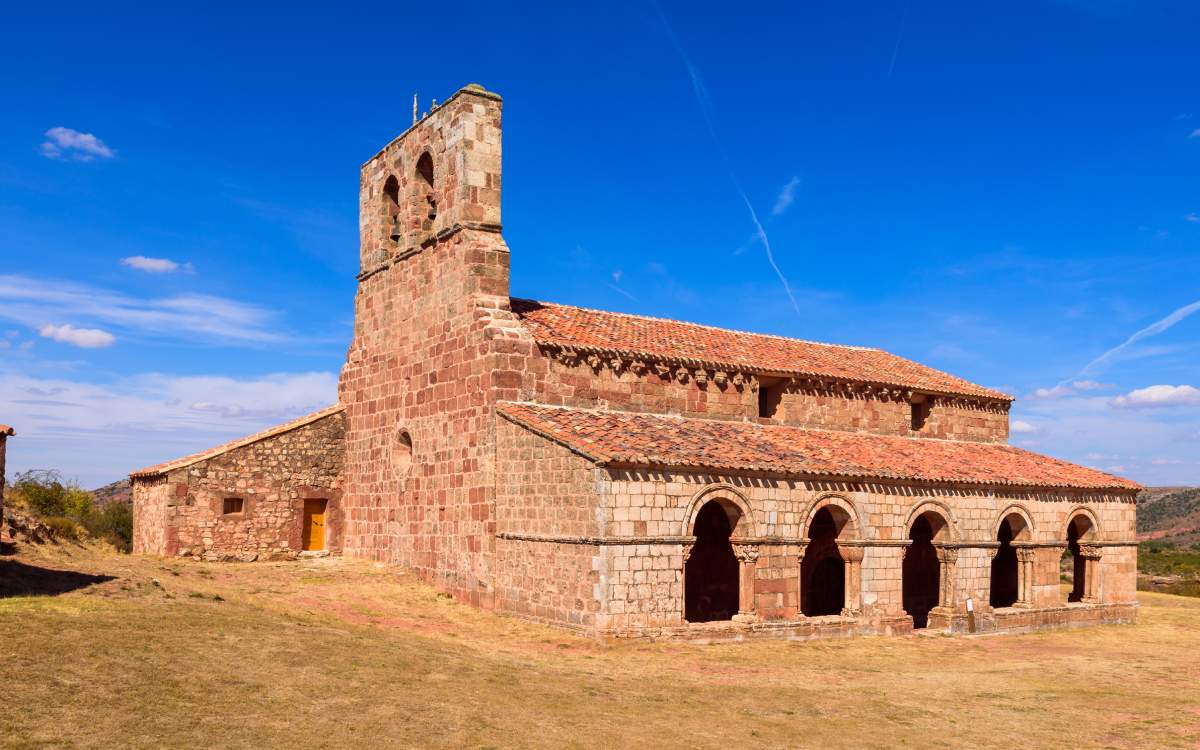
In the 1960s, the archaeologist Blas Taracena, who directed the Museum Numantino, gave this place the name of the ‘Spanish Pompeii’. Such was the charm of this archaeological orchard, which is one of the best sites to travel back to Spain’s past eras.
Tiernes sits in the heart of Soria’s wilderness, at 1,200 metres of altitude, in the untamed area of the Sierra de Pela. Although it is now incredibly lonely, this place was inhabited for 3,500 years. A fresh breeze dances while visitors admire the landscape, making them wonder how anyone could live here besides the vultures that fly over this corner.

The ‘Spanish Pompeii’. | Shutterstock
By the time Taracena studied Tiermes’ remains, they had already been explored by many other experts. The German historian and archaeologist Schulten and the Spanish-German anthropologist Obermaier are some of them.
Most of the old city of Tiermes was carved in the rock, which earned it the name of the ‘Western Treasury of Petra’. Besides its majesty, the compassion with Pompeii was due to its exceptional state of preservation as well as the large amount of sediment and debris found in the place. The excavations haven’t stopped since then, allowing us to understand the human society that lived among these stones, their beliefs and rituals, and how they saw the world.

Old rock-cut houses. | Shutterstock
The magnificent architectural remains that sit in this lonely setting belong to a Celtiberian oppidum and a Roman city. Oppidas were settlements that benefitted from ground elevations or their natural defence, strengthening them with other elements, such as the sandstone present in the place. On the other hand, the Romans built a municipium, Termes.
But the evidence of human life here dates back to even an older time. The first ones belong to the Neolithic and the Bronze Age. This area remained inhabited after Rome’s finale.

Tiermes. | Shutterstock
Visigoth tombs linked to the Middle Ages have been found, as well as a few necropolis. But the Romanesque church by the site is conclusive proof that, together with the Monastery of Santa María de Tiermes, attests to the presence of a stable community that abandoned the place in the 16th century.
In order to admire the ‘Spanish Pompeii’, one must head to the municipality of Montejo de Tiermes, in the south of the province of Soria, almost bordering Segovia. A sinuous road leads to the entrance.

Stairs in the ‘Spanish Pompeii’. | Shutterstock
One must keep in mind that Tiermes sits on a 1,200-metre-high, steep plain, which requires special preparation. However, this is an attainable route that usually takes less than two hours.
The hermitage is a great starting point, but it is also a good idea to start at the museum to get some context. Here are exhibited remains from the Arévaco people (the Celtiberians of this area), such as the powerful falcata swords. Just like Numantia, this place witnessed the tremendous Celtiberian Wars the Romans had to deal with.

Tiermes. | Shutterstock
The soft, reddish stone allowed the construction of rock-cut architecture that protected its owners from the inclement weather. Entrances, grandstands and houses were built in the rock. The southwestern entrance of Puerta del Sol is a great example of this architectural style.
The Casa de las Hornacinas is a representative building that includes interesting pantries. Meanwhile, the Casa del Acueducto, a Roman house, covers 1,800 square metres. It was built next to an aqueduct that carried water from the mountains through underground channels. A wall and two forums were built too, so it is possible to imagine the magnitude of the old Termes.

Hermitage of Santa María de Tiermes. | Shutterstock
Besides the majestic ‘Spanish Pompeii’, there are many other reasons why you should visit this corner in Soria. For instance, the May and October romerías, which take place in the Hermitage of Santa María de Tiermes. Many locals and visitors arrive at Tiermes to experience its romerías.
But September is also an extraordinary time to visit this setting, thanks to the astronomical days that are held here, AstroTiermes. Astronomy enthusiasts from many countries visit Tiermes to enjoy them and Tiermes’ extraordinary clear sky. In the remainder of the year, the wonderful nature of this area guarantees a visit full of routes, viewpoints and true relaxation.
You can also read this article in Spanish here.
Follow us on Facebook!